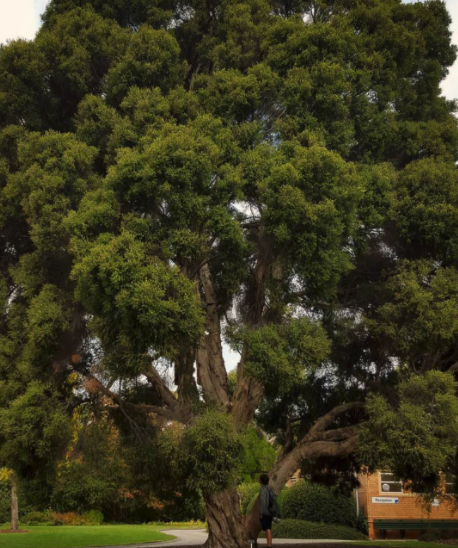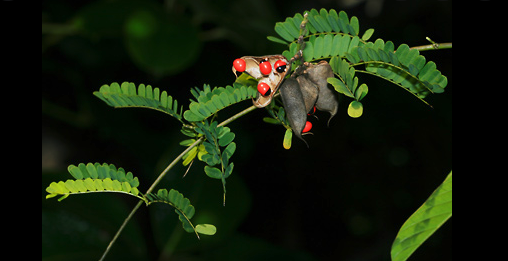Who thought planting certain plants were a bad thing? We thought we were doing good deeds by planting plants and making a beautiful landscape for nature. Unfortunately, not all plants are actually good.So, what are invasive plants? Invasive species are defined as an introduced organism that becomes over populated and negatively alters its new environment. Invasive species adversely affect the invaded habitats and bioregions, causing ecological, economic and environmental damage. This results in loss of native plants and messing up the natural ecology. This could also alter natural processes such as fire frequency and water flow.
Common Invasive Ornamental Plants
Brazillian Pepper
Brazilian Peppers were brought to Florida in the mid 1800s to be used as an ornamental plant. Furthermore, it is a shrub/small tree that carries a shallow root system with nearly vine like branches. Secondly, a major problem is, the way they grow. They tend to invade mature canopies and climb over understory trees which end up choking out most other plants. Not only does it invade life on land, but also invades aquatic life. As a result, it hugely reduces the quality of biotic communities by displacing reproductive habitat and displacing food. Now, listed a “Category I” invasive plant due to it changing community structures and ecological functions.
Melaleuca
Melaleuca trees are native to Australia. Oddly enough, they are actually a beneficial tree to Australia. However, in Florida it is a large pest and invasive. Melaleuca is a tree that grows to about 80ft tall that has whitish, spongy and peeling bark. The fruits are short and have woody capsules with many tiny seeds. Just like the Brazilian Pepper, it has the ability to grow in aquatic environment as well. Therefore, because of the large quantities of seeds that become trees they spread fast. Thirdly, purposely set fires actually help spread the seeds, which makes it harder to control them. Since Melaleuca has been introduced to Florida, it has taken over hundreds of thousands of acres in the everglades. Leading to threatening the existence of the everglades.

Japanese Honeysuckle
This plant was introduced as an ornamental and used for erosion control in New York State. Japanese Honeysuckle is a vining bush like plant. Also, they have very fragrant white to yellow flowers in the spring that hold sweet nectar. It is a fast growing vine that twists around stems of shrubs and plants that act as vertical supports. The problem is that it smothers and kills the vegetation it wraps around. As well, the birds carry the carry the berries and actually end up spreading the seeds. This allows for the plant to take over and choke out where ever it grows. Even if it doesn’t have anything to clim, it will grow across the ground until it does, it grows no matter what. The only way to actually control this invasive is using an herbicide as it will not only kill the plant but the roots as well.
Rosary Pea
Rosary Pea is also commonly used as an ornamental plant in Florida. Interestingly enough, Rosary Pea is highly toxic and fatal if ingested by humans. However, birds remain unaffected by the toxin abrin. As a result, they are the main source of spreading the plant. These plants can grow over smaller trees and shrubs and has a large taproot that makes it difficult to remove. They are a “Category I” plant by the Florida Exotic Pest Council. Meaning, these invasive alter native plant communities by displacing native species which changes ecological functions. Along with the Melaleuca, Rosary Peas growth is actually encouraged by fires. Leaving that an ineffective method of removal. As a result, pulling, tilling or an herbicide is more effective.

Native Alternatives
Holly Trees/ Shrubs
Holly trees are a good replacement for the Brazilian Pepper as Holly Trees are native to Florida. There are three common types native to Florida; American, Yaupon, Dahoon and East Palatka. In addition, these trees are evergreen with beautiful shiny leaves and clusters of red berries.

Trumpet Creeper
Trumpet Creeper is a good native alternative to a the invasive the Japanese Honeysuckle. In addition, this plant has beautiful reddish orange flowers that actually attract the Ruby throated hummingbirds. As well, because of the rapid colonization of suckers and layering, they help with erosion control.
Swamp Leather Flower
These gorgeous flowers are red or purple and hang down in a bell shape. Their native habitat in Florida is typically along stream banks and in swamps. However, they are relatively easy to grow and like to vine. As well, these wonderful plants attract a variety of pollinators and the seeds provide food for many birds and small wildlife.

In conclusion, please make sure when you are planting for your landscape you are aware of what you are buying and planting. As native species are the best options. Make sure to educate yourself as even with plants there are good and bad ones and is best to choose types that will promote a healthy ecosystem. At RH Miller Pest Services we take pride in making sure that you can have peace of mind. Also, servicing Central Florida for over 28 years, including areas like Orlando. Most importantly, we have the expertise to get the results you desire! Moreover, whether you have issues with Bugs, Wildlife or Lawn; we do it all. Find out why we have a 5 STAR rating on Google today! Give us a call @407-339-7119 to set up a free estimate and leave the rest to us!



